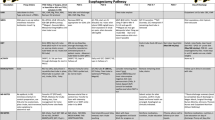Abstract
Background
Esophagectomy can be associated with significant morbidity such as leaks and strictures. Preoperative gastric ischemic conditioning is a concept aimed at inducing an ischemic insult to the gastric fundus and cardia prior to esophagectomy, thus leading to improvement of gastric perfusion.
Methods
This retrospective study compared outcome data from 81 patients who underwent esophagectomy after laparoscopic gastric ischemic conditioning with that from 71 patients who underwent esophagectomy without conditioning. Gastric ischemic conditioning consisted of laparoscopic division of the left gastric vessels ± the short gastric vessels. The time interval from gastric ischemic conditioning to esophagectomy ranged from 2 to 75 days. Main outcome measures included demographics, mean time interval between staging and esophagectomy, and the rate of leaks and strictures following esophagectomy.
Results
The two groups were comparable with respect to gender and age. In the gastric ischemic conditioning procedures, there were no conversions; the mean operative time was 57 ± 15 min, the mean length of hospital stay was 1.0 ± 1.1 days, and the rate of postoperative complications was 3.7%. The mean time interval between gastric ischemic conditioning and esophagectomy was 6.0 ± 5.4 days. There were no significant differences in the leak rate (11.1% for conditioning vs. 8.5% without conditioning) or stricture rate (29.6% for conditioning vs. 25.3% without conditioning) between the two groups.
Conclusions
Laparoscopic gastric ischemic conditioning is feasible and safe. However, the use of gastric ischemic conditioning in this study did not alter the clinical rate of postoperative leaks and strictures.
Similar content being viewed by others
References
Urschel JD (1998) Esophagogastric anastomotic leaks: the importance of gastric ischemia and therapeutic applications of gastric conditioning. J Invest Surg 11(4):245–250
Urschel JD, Antkowiak JG, Delacure MD, Takita H (1997) Ischemic conditioning (delay phenomenon) improves esophagogastric anastomotic wound healing in the rate. J Surg Oncol 66:254–256
Reavis KM, Chang EY, Hunter JG, Jobe BA (2005) Utilization of the delay phenomenon improves blood flow and reduces collagen deposition in esophagogastric anastomoses. Ann Surg 241:736–747
Akiyama S, Kodera Y, Sekiguchi H, Kasai Y, Kondo K, Ito K, Takagi H (1998) Preoperative embolization therapy for esophageal operation. J Surg Oncol 69:219–223
Holscher AH, Schneider PM, Gutschow C, Schroder W (2007) Laparoscopic ischemic conditioning of the stomach for esophageal replacement. Ann Surg 245:241–246
Nguyen NT, Longoria M, Sabio A, Chalifoux S, Lee J, Chang K, Wilson SE (2006) Preoperative laparoscopic ligation of the left gastric vessels in preparation for esophagectomy. Ann Thorac Surg 81:2318–2320
Schröder W, Hölscher AH, Bludau M, Vallböhmer D, Bollschweiler E, Gutschow C (2010) Ivor-Lewis esophagectomy with and without laparoscopic conditioning of the gastric conduit. World J Surg 34:738–743
Veeramootoo D, Shore AC, Shields B, Krishnadas R, Cooper M, Berrisford RG, Wajed SA (2010) Ischemic conditioning shows a time-dependent influence on the fate of the gastric conduit after minimally invasive esophagectomy. Surg Endosc 24(5):1126–1131
Nguyen NT, Mailey BA, Hinojosa MW, Chang K (2008) Natural orifice management of anastomotic leaks after minimally invasive esophagogastrectomy. Surg Innov 15:249–252
Disclosures
N. T. Nguyen, X.-M. T. Nguyen, K. M. Reavis, C. Elliott, H. Masoomi, and M. J. Stamos have no conflicts of interest or financial ties to disclose.
Author information
Authors and Affiliations
Corresponding author
Rights and permissions
About this article
Cite this article
Nguyen, N.T., Nguyen, XM.T., Reavis, K.M. et al. Minimally invasive esophagectomy with and without gastric ischemic conditioning. Surg Endosc 26, 1637–1641 (2012). https://doi.org/10.1007/s00464-011-2083-5
Received:
Accepted:
Published:
Issue Date:
DOI: https://doi.org/10.1007/s00464-011-2083-5



